UPSC Daily Current Affairs: 12th June 2025 | Current Affairs & Hindu Analysis: Daily, Weekly & Monthly PDF Download
GS3/Science and Technology
Nuclear Energy for Net Zero Viksit Bharat - Challenges and Strategic Roadmap
Source: PIB
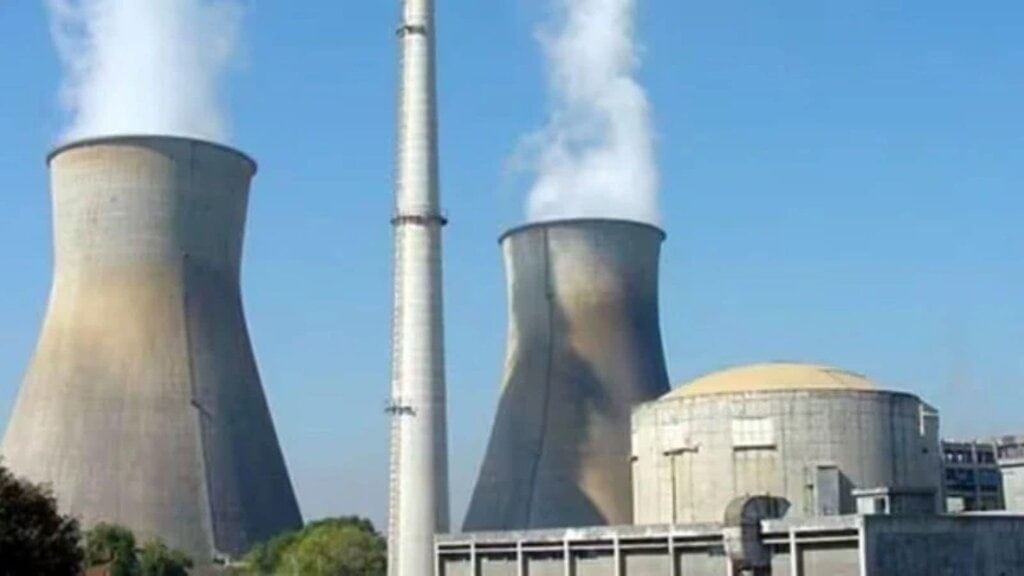 Why in News?
Why in News?India's ambitious goal is to become a developed nation (Viksit Bharat) by 2047, while also achieving net zero carbon emissions by 2070. This dual objective necessitates a significant increase in per capita energy consumption through clean energy sources, with a projected requirement of approximately 28,000 TWh annually. Notably, nuclear energy is expected to contribute nearly 20,000 TWh, underscoring its crucial role in ensuring energy security, sustainability, and human development.
Key Takeaways
- India aims for net zero emissions by 2070, targeting a high Human Development Index (HDI) of 0.95.
- Current energy consumption is 9,800 TWh, predominantly from fossil fuels, necessitating a 70-fold increase in clean energy, with nuclear contributing significantly.
- Enhancements in nuclear technology and domestic capabilities are vital for achieving these energy goals.
Additional Details
- Energy Needs: India's present energy consumption is largely fossil fuel-based, and the transition to clean energy will require a shift towards nuclear power to meet future demands.
- Three-Stage Nuclear Programme: India’s historical vision by Homi Bhabha includes a three-stage nuclear power program. Current challenges include reliance on foreign uranium for the first stage, slow progress on Fast Breeder Reactors (FBRs), and underdevelopment of Thorium-based Molten Salt Reactors (MSRs).
- Domestic Nuclear Capabilities: Pressurized Heavy Water Reactors (PHWRs) are central to India's nuclear strategy, supported by large Light Water Reactors (LWRs). The focus is on scaling up domestic nuclear capacity through initiatives like the 100 GWe mission by 2047.
- Fuel Supply and Security: India’s 100 GWe capacity will require approximately 20,000 tons of uranium annually, highlighting the need for developing fuel recycling technologies and reducing dependence on imports.
- Strategic Technology Directions: Emphasis should be placed on developing thorium MSR-based Small Modular Reactors (SMRs) and collaborating internationally on advanced reactor fuels to bolster India’s energy strategy.
In conclusion, by strategically advancing its indigenous nuclear program, anchored in PHWRs, FBRs, and thorium technologies, India can meet its clean energy targets and emerge as a global leader in sustainable nuclear innovation. A secure, scalable, and self-reliant nuclear energy framework will be essential for realizing the vision of a "Viksit Bharat" by 2047.
GS3/Science and Technology
Groundbreaking Discovery of TOI-6894b
Source: MSN
 Why in News?
Why in News?Scientists have made a remarkable discovery of a gas giant planet, TOI-6894b, which is orbiting a small red dwarf star, a phenomenon previously thought to be impossible.
Key Takeaways
- TOI-6894b is a gas giant approximately the size of Saturn, found orbiting a star significantly smaller than our Sun.
- The planet is located about 241 light-years away from Earth in the constellation Leo.
- This discovery challenges existing models of planet formation around low-mass stars.
Additional Details
- TOI-6894b: This planet has a diameter about 1.07 times that of Saturn but possesses only slightly more than half its mass, making it notably low in density, akin to that of a beach ball.
- Orbit: It orbits its host star, TOI-6894, at an extremely close distance, completing a revolution in less than three Earth days.
- Host Star: TOI-6894 is a red dwarf star with merely 21% the mass of the Sun and around 250 times dimmer. The size ratio between the star and the planet is particularly unusual, with the star being only 2.5 times wider than TOI-6894b.
- Significance: This finding raises questions about the core accretion theory of planet formation, which struggles to explain how such a large planet could form around a low-mass star due to the limited material in its protoplanetary disk.
- Future Research: TOI-6894b is slated for atmospheric studies by the James Webb Space Telescope (JWST), which may uncover significant insights into its composition and origins.
This discovery not only challenges existing theories but also suggests that there may be many more giant planets orbiting small stars in our galaxy than previously recognized.
GS3/Economy
Significance of The Next Census for India’s Economy
Source: Indian Express
Why in News?
The Government of India is set to conduct the next Census in two phases during 2026 and 2027, with March 1, 2027, identified as the reference date. This marks a departure from the country's uninterrupted decadal Census tradition since 1881, as the 2021 Census was postponed due to the Covid pandemic. The six-year delay is significantly longer compared to neighboring countries like Pakistan, Bangladesh, and Sri Lanka. The Ministry of Home Affairs indicated that the delay was influenced by the pandemic's impact on education, as around 30 lakh Census enumerators—primarily primary school teachers—could not be released without disrupting schooling.
Key Takeaways
- The Census is crucial for economic planning and governance in India.
- It provides foundational data for inflation control and interest rate policies.
- Census data is vital for understanding migration and urbanization trends.
- There is no effective substitute for the Census in data accuracy and reliability.
Additional Details
- Census Role: The Census serves as the statistical foundation for all subsequent surveys and analyses in India, ensuring accurate representation and sampling.
- Comprehensive Data Collection: It collects extensive information on demographics, economic status, education, migration, disability, and language, providing a holistic overview of the nation.
- Policymaking Impact: Census data directly informs various policies, welfare schemes, and development plans across sectors, ensuring that governmental decisions are responsive to population needs.
- Monetary Policy Guidance: The Reserve Bank of India’s Monetary Policy Committee utilizes Census data to inform interest rate decisions based on the Consumer Price Index (CPI), which reflects changing prices of goods and services influenced by consumption patterns derived from Census data.
- Migration Insights: Internal migration patterns, which are often overlooked, play a critical role in shaping demographic dynamics. Current migration data is based on the outdated 2011 Census, necessitating new data for accurate policy formulation.
- Urbanization Challenges: The uncertainty surrounding India's urbanization rate hampers effective urban planning, as cities, contributing significantly to the GDP, require precise population data for infrastructure and service delivery improvements.
The upcoming Census is essential not only for economic planning but also for understanding the changing dynamics of Indian society. Accurate and updated data will be critical for addressing contemporary challenges and ensuring effective governance moving forward.
GS2/International Relations
UN High Seas Treaty
Source: The Hindu
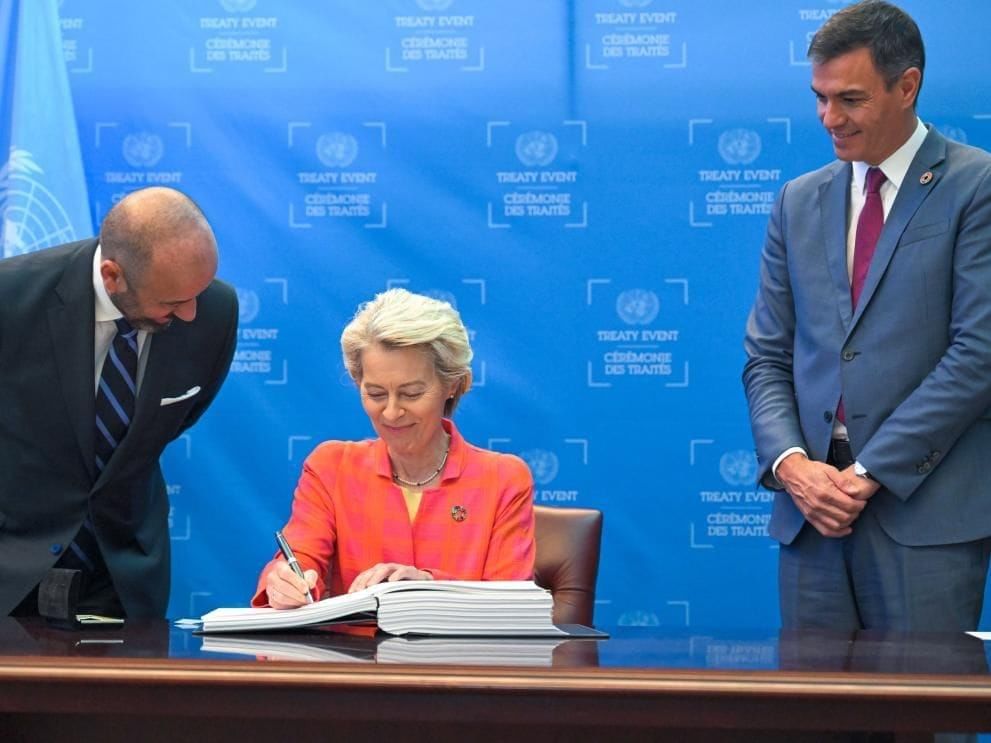 Why in News?
Why in News?India is reportedly unlikely to ratify the UN High Seas Treaty at the ongoing U.N. Ocean Conference in France, despite considerable pressure from the host nation and other international stakeholders.
Key Takeaways
- The UN High Seas Treaty, also known as the Agreement on the Conservation and Sustainable Use of Marine Biological Diversity of Areas Beyond National Jurisdiction (BBNJ), aims to protect marine biodiversity in international waters.
- This treaty is the first legally binding international instrument focused specifically on conservation efforts beyond national jurisdictions.
- It builds upon the UN Convention on the Law of the Sea (UNCLOS), which was signed in 1982 and established the high seas.
Additional Details
- Scope: The treaty covers the high seas, which constitute approximately two-thirds of the world's oceans and nearly half of the Earth's surface.
- Objective: To create a legal framework for the conservation and sustainable use of marine biodiversity in international waters, addressing existing regulatory gaps and fostering global cooperation.
- Key Provisions:
- Marine Protected Areas (MPAs): Allows for the establishment and management of MPAs in the high seas to safeguard marine ecosystems.
- Environmental Impact Assessments (EIAs): Requires EIAs for activities that may negatively impact the marine environment, even if these activities are expected to occur in international waters.
- Marine Genetic Resources (MGRs): Ensures equitable sharing of benefits derived from marine genetic resources, including digital sequence information.
- Capacity Building and Technology Transfer: Aims to assist developing nations in enhancing their capabilities and accessing marine technologies for conservation and sustainable use.
In summary, the UN High Seas Treaty represents a significant step towards the protection of marine biodiversity in international waters, although India's potential non-ratification poses challenges to its global acceptance and implementation.
GS2/International Relations
Bad Blood: India and Canada Must Use Every Opportunity to Reset Ties
Source: The Hindu
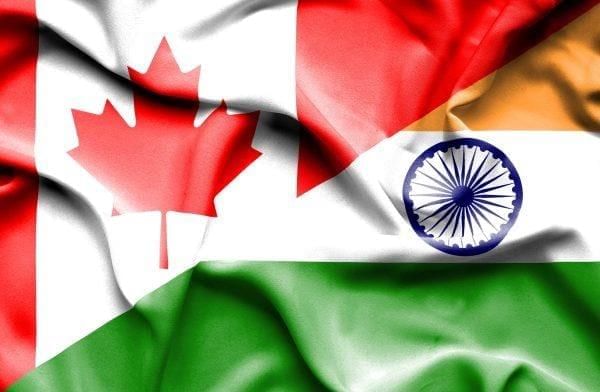 Why in News?
Why in News?The upcoming visit of Prime Minister Modi to Kananaskis, Alberta, for the G-7 outreach summit presents a crucial opportunity for India and Canada to mend their diplomatic relations, which have soured since 2023.
Key Takeaways
- The diplomatic relationship between India and Canada has deteriorated primarily due to allegations surrounding the assassination of Khalistani activist Hardeep Singh Nijjar.
- Prime Minister Modi's attendance at the G-7 summit is seen as a pivotal moment for potential diplomatic engagement.
Additional Details
- Assassination Allegations: Canadian Prime Minister Justin Trudeau accused Indian government agents of being involved in Nijjar's assassination on Canadian soil, a claim that has not been substantiated with evidence.
- Diplomatic Fallout: In response to these allegations, both nations reduced their diplomatic staff by one-third, which significantly weakened their engagement and services.
- Suspension of Key Agreements: Canada halted negotiations for a Free Trade Agreement (FTA) with India, while India temporarily ceased issuing visas to Canadian citizens, citing security concerns.
- Naming of Senior Indian Official: The Royal Canadian Mounted Police (RCMP) named Indian Home Minister Amit Shah in connection with the allegations, further intensifying tensions.
- Historical Frictions: The long-standing Khalistan issue and the presence of Khalistani extremism in Canada have exacerbated India's concerns, especially given the significant Indian diaspora in Canada.
Prime Minister Modi’s visit to the G-7 summit symbolizes a potential diplomatic reset, as Canada aims to reopen channels of communication following the tensions post-2023 Nijjar incident. The summit serves as a platform to address sensitive issues and initiate discussions on law enforcement cooperation, essential for tackling the Nijjar case and restoring trust.
Key Stakeholders
- Prime Minister of India: Represents India at the G-7 and is central to diplomatic outreach.
- Prime Minister Mark Carney: Key figure in Canada’s initiative to normalize ties with India.
- Law Enforcement Agencies: Both countries are set to establish a legal dialogue to address allegations and security threats.
- Diaspora Communities: The 1.86 million-strong Indian community in Canada acts as a crucial link between the two nations.
- Trade and Diplomatic Negotiators: Officials working to restore dialogue on trade and diplomacy.
Rebuilding Trust and Cooperation
- Facilitate Law Enforcement Dialogue: Structured legal cooperation should be engaged to handle allegations discreetly.
- Avoid Public Accusations: Governments must refrain from making unverified public allegations to prevent escalation of tensions.
- Restore Diplomatic Presence: Reinstating full diplomatic staff will enhance communication and prevent misunderstandings during investigations.
- Resume Diplomatic Engagement: Activating official dialogues on law enforcement and trade will help normalize relations.
- Prioritize Economic Links: Focus on shared interests in education and investment cooperation can help rebuild ties.
In conclusion, the diplomatic reset at the G-7 summit is an opportunity for India and Canada to reaffirm their connection, leveraging the substantial Indian diaspora in Canada to foster renewed cooperation amidst political challenges.
GS1/History & Culture
Poson Poya Festival in Sri Lanka
Source:
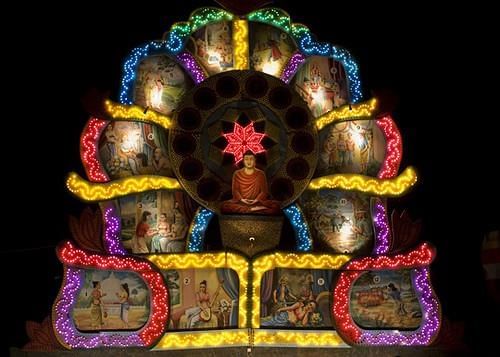 Why in News?
Why in News?Sri Lanka is currently celebrating the Poson Poya festival, which commemorates the arrival of Buddhism in the country over 2,000 years ago.
Key Takeaways
- Poson Poya is the second most significant Buddhist festival in Sri Lanka, following Vesak.
- The festival is celebrated on the full moon day of June, which corresponds to the seventh month of the Sinhalese calendar.
- It commemorates the arrival of Buddhism in Sri Lanka in 236 BCE, marked by the visit of Arahat Mahinda, son of Emperor Ashoka, to meet King Devanampiyatissa.
- Key locations for celebrations include Anuradhapura, which is renowned for its sacred observances.
- Rituals include temple visits, meditation, offerings, and acts of charity (Dana).
- Communities engage in cultural expressions such as free food stalls (Dansalas), decorating homes and streets with lanterns, and displaying illuminated panels depicting Buddhist stories.
Additional Details
- Spread of Buddhism to Sri Lanka: Following the Third Buddhist Council in 250 BC during Ashoka's reign, it was decided to send missionaries to various regions, including Sri Lanka, to propagate Buddhism.
- The mission to Sri Lanka was led by Mahinda (Mahendra), Ashoka's son, who successfully converted King Devanampiya Tissa of Anuradhapura to Buddhism.
- After several royal ladies expressed a desire to join the Buddhist monastic order, Mahinda summoned his sister, Sanghamitra, to initiate them into the faith.
- Both Mahinda and Sanghamitra spent their lives in Anuradhapura, with Sanghamitra establishing the Order of Nuns (Bhikkhuni Sangha or Meheini Sasna), which later spread to other Theravada Buddhist countries such as Burma, China, and Thailand.
- Sanghabhuti, an Indian Buddhist monk, traveled to China in the late fourth century AD and authored a commentary on important Buddhist texts.
The Poson Poya festival is not only a religious observance but also a vital part of Sri Lanka's cultural identity, reflecting the deep historical roots of Buddhism in the country.
GS3/Environment
Ohler’s Spiny Frog
Source: Bradenton Herald
Why in News?
Ohler’s Spiny Frog, a newly identified species of large stout frog with distinctive spiny features, was discovered near a waterfall in Vietnam. Measuring over 4 inches long, this finding challenges established conservation norms.
Key Takeaways
- Ohler’s Spiny Frog belongs to the genera Quasipaa and is characterized by its robust size and spiny chest.
- These frogs inhabit fast-flowing streams in evergreen forests across Southeast Asia and the Himalayan foothills.
Additional Details
- Habitat: Found in rocky streams within evergreen forests, primarily located in northern Vietnam, southern China, and the Himalayan region.
- Key Features:
- Stout body with rough, spiny tubercles on the chest, particularly in males.
- Partially webbed toes and dark brown skin with yellowish mottling.
- Size can exceed 10 cm in snout-vent length, typically ranging from 7-8 cm.
- Significance:
- Ecological Value: Contributes to biodiversity and highlights the unique ecological characteristics of waterfall ecosystems.
- Conservation Insight: Emphasizes the importance of protecting habitats in Vietnam for stream-dwelling amphibians.
- Research Contribution: Aids in the biogeographical studies of Dicroglossidae frogs throughout Indo-Asia.
This discovery not only enhances our understanding of amphibian diversity but also underscores the urgent need for conservation efforts to protect these unique species and their habitats.
GS1/History & Culture
PM Pays Tributes to Sant Kabir
Source: AIR
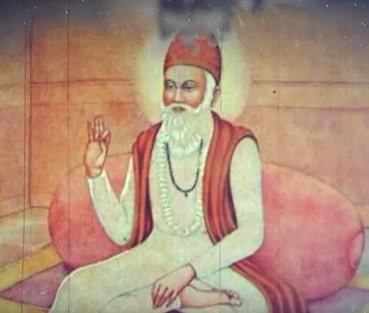 Why in News?
Why in News?The Prime Minister recently paid heartfelt tributes to Sant Kabir Das in honor of his birth anniversary, recognizing his profound influence on Indian spirituality and social reform.
Key Takeaways
- Sant Kabir was born in Kashi (Varanasi, Uttar Pradesh) between 1398 and 1440 and died in 1518.
- He was raised in the socially marginalized julaha (weaver) community, which influenced his teachings on equality and anti-casteism.
Additional Details
- Early Life: Kabir was born to a Brahmin widow but was adopted by a Muslim couple, Niru and Nima, shaping his unique perspective on religion and society.
- Spiritual Awakening: Despite being raised in a Muslim household, he became a disciple of Swami Ramananda, a Vaishnava Bhakti saint, and was influenced by Sufi mysticism through Shaikh Taqqi.
- Death: Kabir passed away in Maghar, Uttar Pradesh, and according to legend, his body vanished, leaving only flowers that were divided between Hindus and Muslims.
- Literary Contributions: He wrote in multiple languages, including Hindi, Urdu, and Punjabi, with his most famous works being Dohe (couplets) and Pads (devotional songs), noted for their simplicity and deep spiritual insight.
- Teachings: Kabir advocated for Nirguna Bhakti, the worship of a formless God, emphasizing that God transcends names and forms.
- Social Reform: He opposed ritualism and caste discrimination, urging individuals to seek God within themselves and promoting social equality.
- Legacy: The Kabir Panth, a spiritual tradition based on his teachings, has over 9.6 million followers and he is respected across both Hinduism and Islam.
In conclusion, Sant Kabir's teachings and poetic expressions continue to resonate through centuries, advocating for social justice and spiritual unity.
Consider the following statements:
- 1. Saint Nimbarka was a contemporary of Akbar.
- 2. Saint Kabir was greatly influenced by Shaikh Ahmad Sirhindi.
Which of the statements given above is/are correct?
Options: (a) 1 only (b) 2 only (c) Both 1 and 2 (d) Neither 1 nor 2*
GS3/Defence & Security
Drone Warfare & India
Source: Indian Express
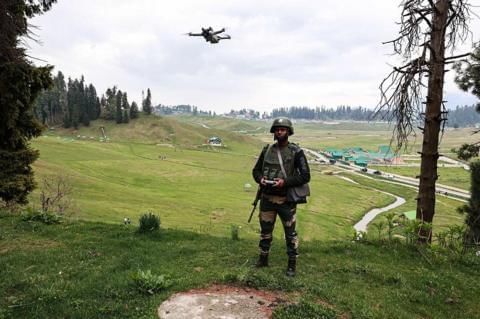 Why in News?
Why in News?Former Army Chief General M M Naravane's warning in 2021 regarding the risks associated with low-tech warfare has gained renewed significance. Recent incidents demonstrate the pressing need to address the evolving landscape of drone warfare:
- Ukraine successfully utilized inexpensive First Person View (FPV) drones to strike five Russian airbases, illustrating how low-cost drones can evade conventional air defenses.
- In May, following the Operation Sindoor, Pakistan executed extensive drone swarm attacks against India, emphasizing the urgent requirement for revamped air defense strategies to counter asymmetric and budget-friendly drone warfare.
Key Takeaways
- The rise of drone warfare signifies a strategic shift in modern combat tactics.
- Drone swarms present a growing threat due to their operational adaptability and potential for coordinated strikes.
Additional Details
- The Rise of Drone Warfare: Drones, or Unmanned Aerial Vehicles (UAVs), have evolved since their early use in World War II and the Korean War for training and limited offensive operations.
- Drone Swarms: Future combat scenarios will likely feature swarms of drones that work collectively, adapting in real-time and continuing missions despite losses. Their advantages include saturation attacks, real-time intelligence gathering, and coordinated strikes on high-value targets.
- Market Outlook: The global military drone market is experiencing rapid growth, projected to increase from $14.14 billion in 2023 to $47.16 billion by 2032. This reflects an expanding role for drones in contemporary warfare.
- India’s Unique Vulnerabilities: With porous borders and diverse populations, India faces a significant risk of surprise drone attacks, necessitating an integrated approach to security.
- Detection Systems: Effective defense against drones begins with advanced detection systems, such as AESA radars, electro-optical and infrared sensors, and AI-powered sensor fusion.
- Emerging Cost-Effective Technologies: To tackle drone threats more efficiently, militaries are adopting technologies like Directed Energy Weapons (DEWs), electronic warfare tactics, and interceptor drones.
- The Layered Defence Model: Optimal protection against drone threats involves a multi-layered defense strategy, combining various technologies to enhance redundancy and cost-efficiency.
- India’s Anti-Drone Systems: Notable systems include the Akashteer Air Defence Control System and DRDO’s Anti-Drone System, designed for comprehensive threat detection and neutralization.
As conflicts increasingly shift towards unmanned and AI-driven engagements, the emphasis on developing resilient, integrated defense systems becomes critical for countering sophisticated drone threats. The ongoing global race to enhance both drone and anti-drone capabilities underscores the necessity for nations to adapt swiftly to these emerging challenges.
GS3/Economy
SEBI Launches Verified UPI IDs to Curb Market Frauds and Enhance Investor Protection
Source: Economic Times
Why in News?
The Securities and Exchange Board of India (SEBI) is set to implement a validated UPI handle for investor-facing intermediaries to ensure secure payments and reduce fraud risks.
Key Takeaways
- Mandatory use of verified UPI handles ending in @valid for all registered intermediaries in the securities market.
- Introduction of the SEBI Check mobile application to verify UPI IDs used by intermediaries.
- Transition period for existing UPI IDs until December 11, 2026.
Additional Details
- New UPI Verification Framework: All market-facing intermediaries, including brokers and investment advisors, must adopt a designated format for UPI handles to enhance transaction security.
- Visual Confirmation: During transactions, a green triangle with a thumbs-up icon will confirm the use of verified handles, aiding users who may have language barriers.
- SEBI Check Tool: This mobile app will allow investors to verify details, such as account holder names and IFSC codes, by scanning QR codes or entering UPI IDs directly.
- Rationale for Changes: This initiative aims to combat impersonation scams and digital fraud, providing a more secure environment for investors.
- Future Outlook: SEBI's framework may set a benchmark for secure digital transactions across various financial sectors, aligning with global best practices for verification.
In conclusion, SEBI's new measures aim to enhance investor safety and trust in digital transactions, establishing clearer standards for UPI handles and empowering investors with verification tools.
GS3/Science and Technology
Tourette Syndrome
Source: The Hindu
Why in News?
Tourette syndrome is a neurological disorder that significantly affects individuals worldwide, with an estimated prevalence of 0.3% to 1%. It is crucial to understand its implications on daily functioning and mental health.
Key Takeaways
- Tourette syndrome typically emerges between the ages of 2 and 15, with an average onset around the age of six.
- Tics can be classified as simple or complex, affecting both motor and vocal functions.
- The condition often coexists with other disorders such as ADHD and OCD.
- While there is no cure, treatment options like Cognitive Behavioral Therapy (CBT) can help manage symptoms.
Additional Details
- Tics: These are involuntary movements or vocal sounds. They can range from mild to severe, impacting communication and quality of life.
- Simple motor tics: Involve a single muscle group, such as eye blinking and shoulder shrugging.
- Complex motor tics: Involve coordinated patterns, like hopping or touching objects.
- Vocal tics: Can include throat-clearing or in rare cases, coprolalia, which involves using obscene language.
- Influence of Stress: Tics often worsen with stress or excitement and may improve during calm or focused periods.
- Comorbidities: Tourette syndrome rarely occurs in isolation and is commonly associated with ADHD, OCD, anxiety, and learning disabilities.
- Treatment: Although a cure is not available, CBT has shown promising results in managing symptoms.
Understanding Tourette syndrome is essential for improving the quality of life for affected individuals. With appropriate management strategies, those with Tourette syndrome can lead fulfilling lives.
GS3/Economy
Why Governments Revise GDP Base Year and Methodology: The Significance of the Proposed 2026 Revision for India
Source: Indian Express
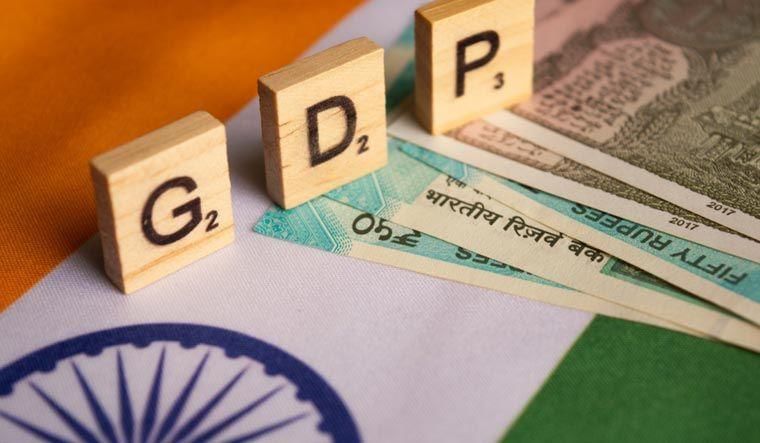 Why in News?
Why in News?India is set to update the base year for calculating its Gross Domestic Product (GDP) to 2022-23, with new data expected by February 2026. This decision, confirmed by Saurabh Garg from the Ministry of Statistics, is a crucial step aimed at enhancing the accuracy and reliability of India's economic data, both domestically and internationally.
Key Takeaways
- The base year for GDP revisions reflects structural changes in the economy.
- Updated data sources improve the accuracy of GDP calculations.
- Revisions align India's economic data with international standards.
- Past challenges have delayed previous GDP revisions.
Additional Details
- Reflecting Structural Changes: India's economy has transitioned significantly from agriculture to services and digital sectors. Revising the base year will more accurately capture these shifts, incorporating aspects like the rise of digital platforms and the gig economy post-2015 into GDP estimates.
- Incorporating Improved and Updated Data Sources: New datasets, such as the Periodic Labour Force Survey (PLFS) and administrative records like MCA-21, offer more comprehensive and timely data for GDP computation. The PLFS, for instance, provides better insights into employment trends compared to older surveys.
- Ensuring Compatibility with International Standards: Regular revisions align with UN and IMF guidelines, allowing for precise real GDP estimations by adjusting for price changes. Without updates, outdated price structures may distort real growth figures due to inflation.
- Challenges in Previous Revisions: The delay in the 2017-18 base year revision was due to concerns over data quality in key surveys, such as the Consumer Expenditure Survey (CES), which indicated rising poverty but was never officially released. Economic disruptions caused by major policy changes like demonetization and GST implementation also made 2017-18 an unsuitable reference year.
Overall, the upcoming base year revision is expected to significantly enhance the credibility of India’s economic data on the global stage, fostering greater investor confidence and aligning with international standards.
|
38 videos|5293 docs|1118 tests
|
FAQs on UPSC Daily Current Affairs: 12th June 2025 - Current Affairs & Hindu Analysis: Daily, Weekly & Monthly
| 1. What are the challenges associated with nuclear energy in achieving a net-zero goal in India? |  |
| 2. How does the groundbreaking discovery of TOI-6894b impact our understanding of exoplanets? |  |
| 3. Why is the next census significant for India’s economy? |  |
| 4. What are the key provisions of the UN High Seas Treaty? |  |
| 5. How can India and Canada reset their diplomatic ties amidst challenges? |  |
















